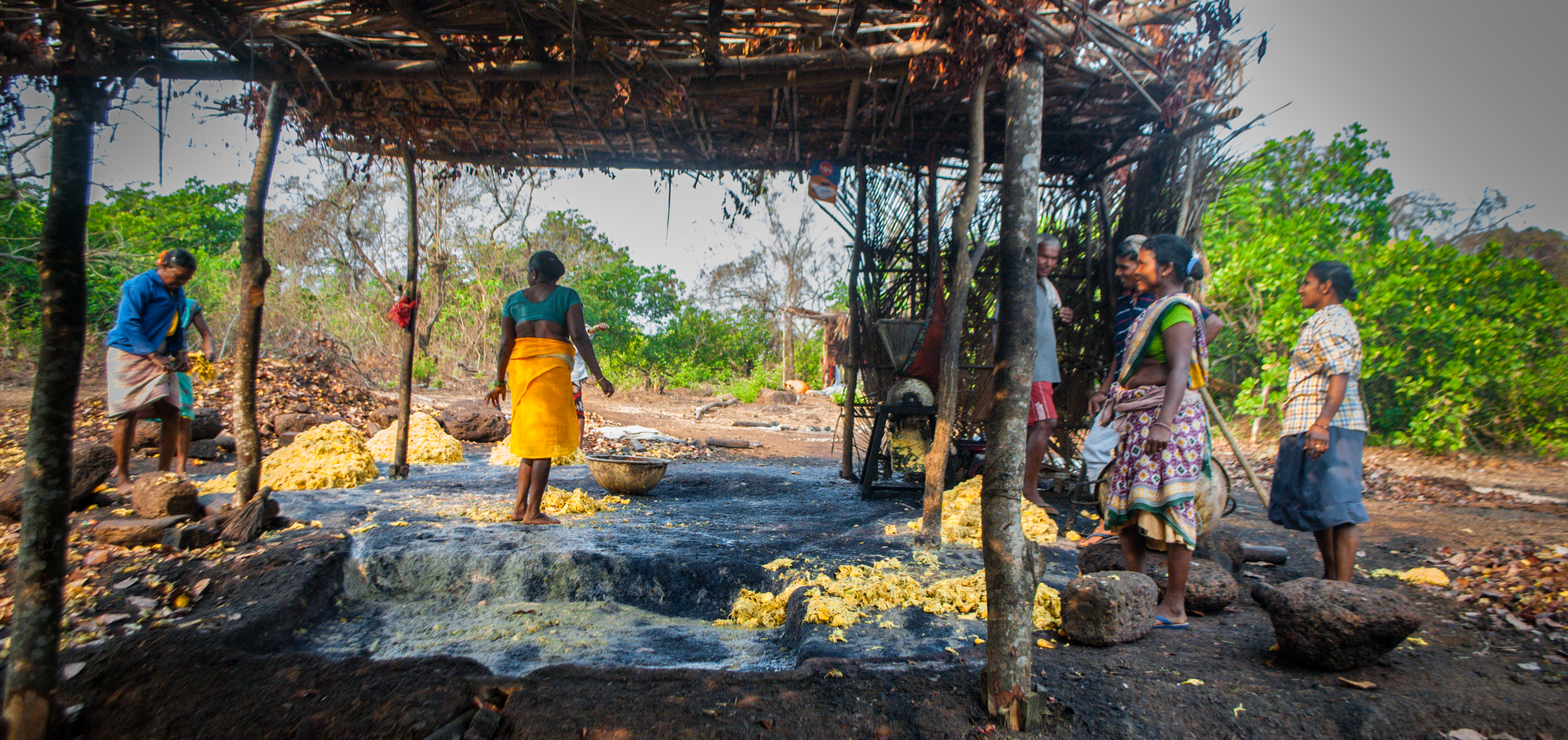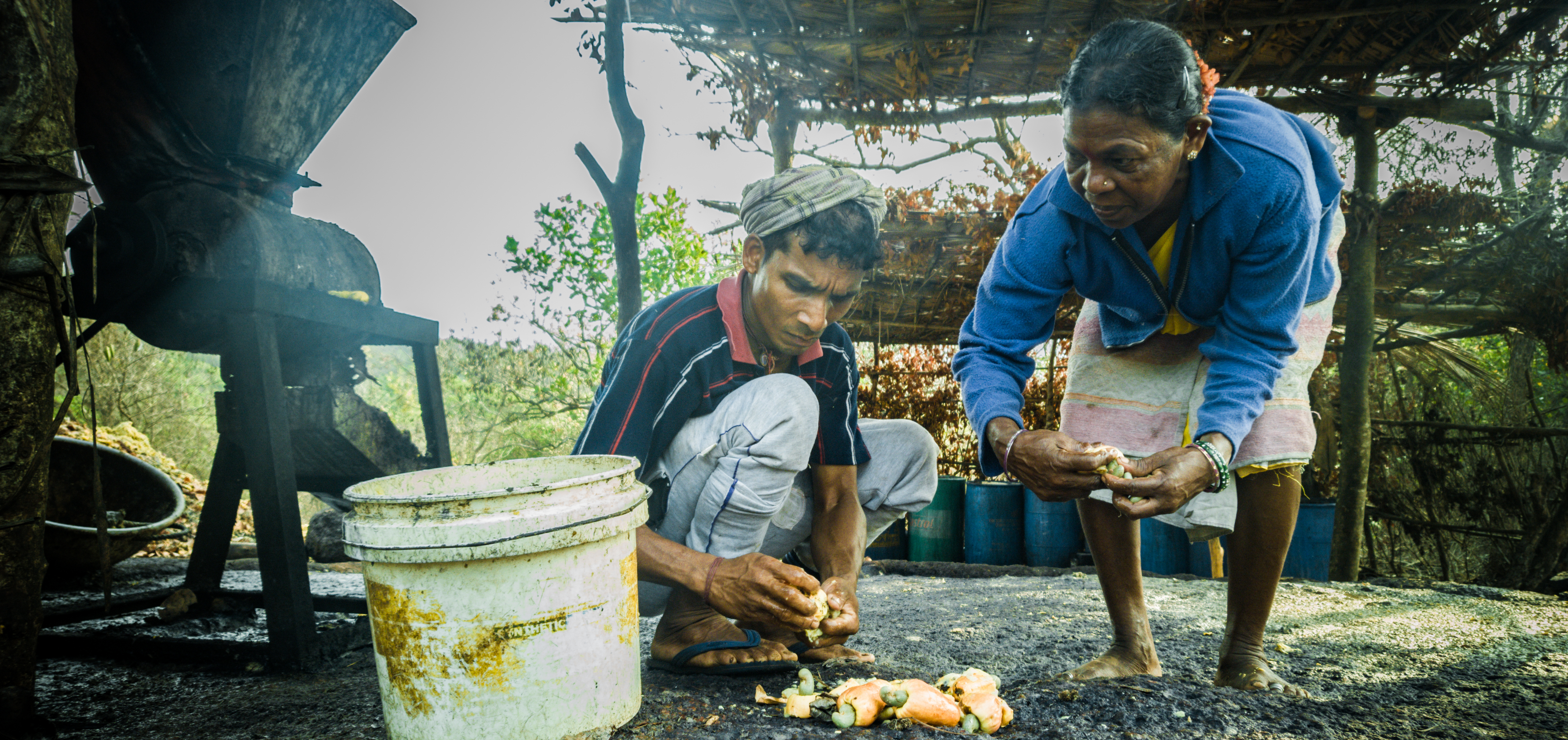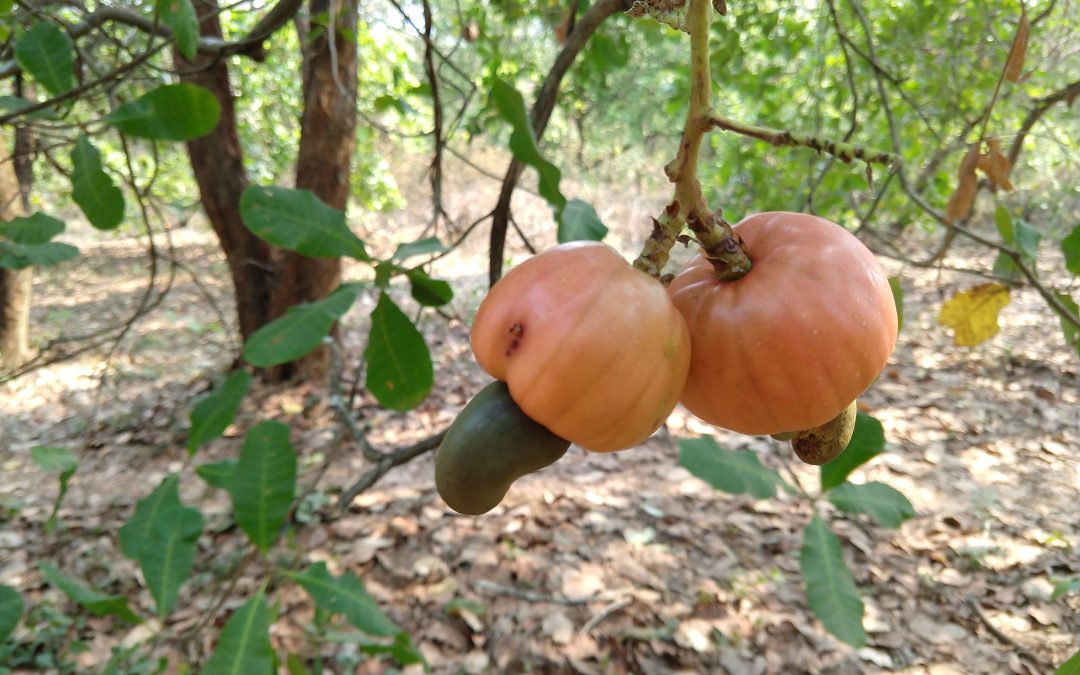
With the raw cashew seed used to obtain the popular cashew nut, the cashew apple is used to derive various alcoholic spirits, thus utilizing the cashew fruit from its tip to core. Although the cashew trees began to bloom in October and November the cashew harvesting process commences around late January with the ripening of the cashew fruits. The cultivators rise early with the sun and set out to collect the cashew fruit. It’s a well-believed practice amongst the cultivators in Goa to pluck the fruit once it has ripened and fallen off the tree using a traditional tool ‘Kotto’ rather than plucking it off directly from the tree. This practice is crucial to ensure a well-ripened fruit to derive the various alcoholic spirits.
After collecting around tons of these raw fruits, the cashew nut is separated from the cashew apple. Raw cashew kernels are eventually procured by the cashew processing factories. There the raw cashew undergoes various processes such as drying, roasting, cutting, removal of moisture, peeling, grading and finally packaging.

The cashew apple, on the other hand, can be consumed in its raw form as a fruit. But the various by-products derived from this fruit such as Urrak and Feni aptly represent the Goan culture and lifestyle. Once the raw cashew fruit is collected the process of extraction of the juice begins either by stomping it manually or using mechanized methods. This juice is fermented for a few days and then distilled to obtain Urrak. Urrak emanates a fruity, pungent aroma and is best enjoyed with raw mangoes during the summertime. By subsequently fermenting the Urrak twice, Feni is obtained. Feni which is regarded as the jungle juice of Goa has received immense popularity among the locals and tourists making its way to the bars of lavish Goan hotels along with the quaint local bars.

